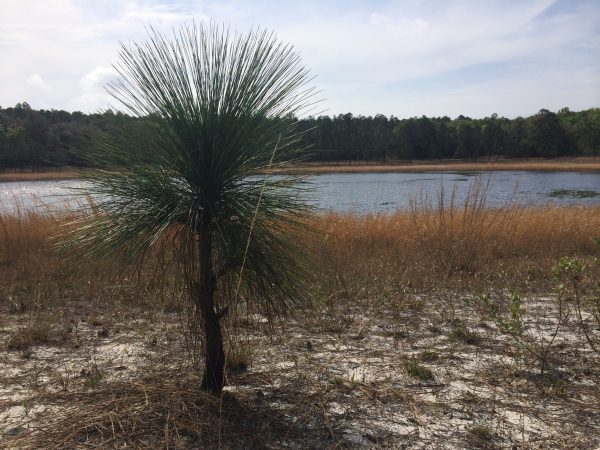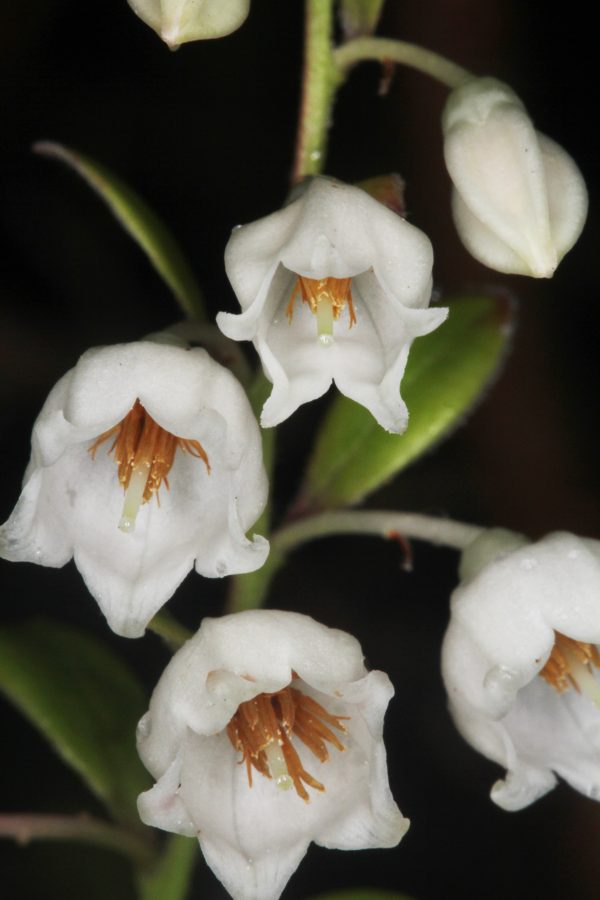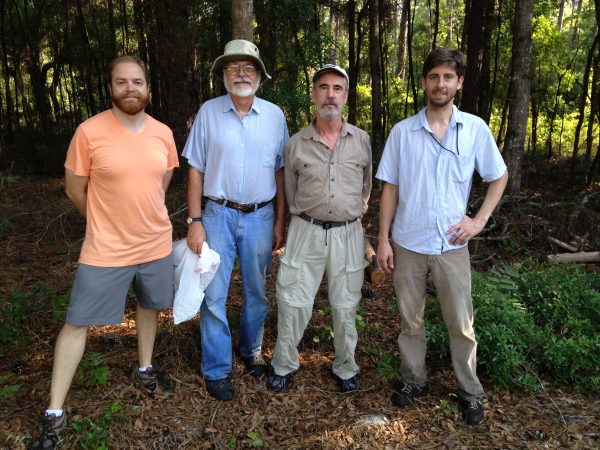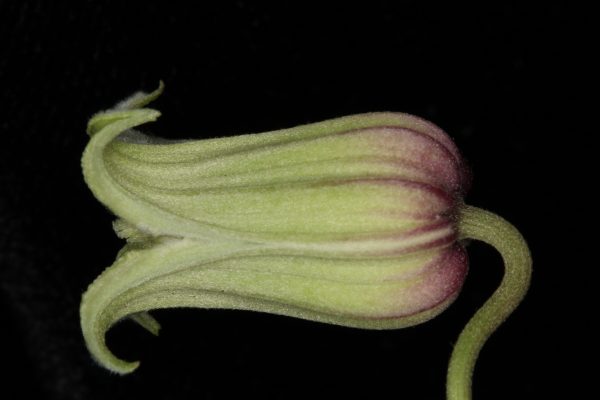
Florida Museum photo by Zach Guignardi
It was home to Native Americans as early as 12,000 B.C., then settlers during the Civil War. Its pine trees contributed to the early 20th century turpentine industry, and for millennia its plants and wildlife have been fueled by an unlikely life source—forest fires.
The 9,700-acre Ordway-Swisher Biological Station, located in Putnam County, Florida, and managed by the University of Florida and its Institute of Food and Agriculture Sciences since 1983, is a snapshot of what once was. As the bubbling springs and lush forests noted by naturalist William Bartram in the 19th century have dwindled, so have the wetlands and uplands that include sand hills, swamps, marshes, hammocks and lakes that characterized central Florida.
Four Florida Museum of Natural History botanists, including senior biological scientist Mark Whitten, are drawn to what remains of this chaotic environment. Funded by IFAS, they have been working for the past year to document every plant in the Ordway as part of a larger project to document every plant statewide.
“Florida’s habitats and species distributions are changing as the climate changes, and places like the Ordway are going to be important as biological reserves for wild species as more and more of Florida gets developed and turned into backyards and parking lots,” Whitten said.

Florida Museum photo by Kurt Neubig
Using DNA barcoding, which determines the exact order of DNA nucleotide sequences to tentatively identify species, researchers have discovered more than 50 species never found in the Ordway and others unknown to Florida. For the last nine years, project leader and Florida Museum courtesy assistant research scientist Kurt Neubig has been working to DNA barcode all of Florida’s plant life. Working with Florida Museum collections manager Kent Perkins, the project has archived more than 6,000 DNA samples covering 60-65 percent of Florida’s 4200 plant species.
Because so much variation occurs within species, the project has required numerous samples of each species and many trips to the Ordway, Whitten said.
“You have to go out at least every month, or you’re going to miss something,” he said. “Last trip, we walked by one clearing at least half a dozen times, and finally we saw a single terrestrial orchid that just happened to be flowering. It was so tiny we almost didn’t spot it.”
Ordway staff biologists such as Lisa Huey frequently alert the Museum when they spot something unusual or rare.
Florida Museum postdoctoral researcher Lucas Majure describes fieldwork at the Ordway as a “treasure hunt.”
“Each time I go out there, I wonder what new things are there, and if we’ll still find plants that existed 30 years ago,” Majure said.
The results from this type of survey work are temporary, but therein lies the importance, Neubig said.
“People think of plants as being rooted, and of course they are,” Neubig said. “But plants have a turnover of generations just like any other organism. Their distributions change over time. We’re doing a very exhaustive search of what species are there, but it’s only a snapshot.”

From left to right: Kurt Neubig, Walter Judd, Mark Whitten, Lucas Majure.
Florida Museum photo by Kurt Neubig
In 10 years, the Ordway’s ecosystems may be different due to the ever-changing distribution of species. In 100 years, researchers can refer to the work of Neubig and his colleagues in multiple ways and reexamine the species. By documenting the plant species within an area, future scientists will be able to look back and see what is still there, what species are in trouble and which have disappeared.
The species verified during the Ordway survey will be added to a massive digital library that aims to store the DNA barcode of every species on Earth. The international Barcode of Life online database (http://ibol.org/about-us/partner-nations/) features contributions from researchers in 28 countries, including those from the Florida Museum. The new library allows scientists to compare and match DNA barcodes to vouchered species in the database, making fieldwork more accurate and efficient.
DNA barcoding is changing the way scientists understand species, but the technology is also shaping the future of consumerism. Whitten said portable DNA barcoding devices that test fish and other food for fraudulent mislabeling is a possibility for the future.
“It’s a way to check truth in advertising,” Whitten said, as a herbarium assistant sat across from him, sipping herbal tea. “In other words, is that really herbal tea, or is it grass clippings?” he quipped.
What Whitten suggests is no joke. Using DNA barcoding, a 2011 Rockefeller University study of herbal tea sold in New York found 35 percent had unlisted ingredients, including lawn grass.
“Perhaps one day we’ll be able to pop bits of butterfly wings or any species into a device, and out will come an identification,” Whitten said. Projects at sites like the Ordway that result in vouchered specimens archived in the Museum’s herbarium are essential to make this a reality, he said.
Despite these technological advances, highly trained botanists are needed to pinpoint rare and difficult-to-find species in field.
“Already, we have found that the checklist of plants at the Ordway that everyone worked from in the past is at least 20 percent erroneous,” Majure said.
The survey’s new discoveries and corrections to errors in the understanding of its species are important on a national level, since the Ordway was selected in 2007 as one of 20 National Ecological Observatory Networks, or NEON sites, with locations stretching from the Caribbean to Alaska. The National Science Foundation-sponsored initiative will monitor ecological processes and environmental health over the next three decades.

Florida Museum photo by Kurt Neubig
At the Ordway, sensors strapped to towers and other technologies, including remote sensing from aircraft and satellites, monitor everything from carbon cycles to biodiversity. Because the Ordway is a NEON site, the new Florida Museum survey will contribute to data used by ecologists and biologists throughout the country.
The Ordway attracts scientific research because it remains in a near-pristine state. A step onto the property is a step back in time to the way Florida existed hundreds of years ago—when large, majestic pines and sleepy hammocks were common–before high-rise condos, freeways and Disney World.
Nonetheless, large wounds on the trunks of thousands of the sanctuary’s pine trees remain from the days when they were tapped for their pitch, or resin, and a Civil War-era cemetery accompanies the remains of homesteads more than 150 years old—reminders of a long history of human influence and management at the Ordway.
“The pine woods were so open, you could drive a wagon and horse through them with no problem,” Whitten said, holding a relic of the Ordway’s turpentine days—a pot used to collect pitch. “They would spend weeks going around, tapping the trees and collecting the turpentine, then putting it in barrels and shipping it off. It was one of the nastiest jobs to have. Imagine doing this in 100-degree heat, covered in sticky pine resin.”
Prior to fire suppression that had its beginnings in the 1920s and ‘30s, the Ordway experienced natural forest fires. This intrinsic process removed dense overgrowth that would otherwise restrict biodiversity. Now, the property is control burned in small sections, though overall the results are not comparable with the natural process of rebirth through fire that occurred in the past. Small, controlled, frequent fires are good for the forest, Neubig said.
“When you hear there’s a forest fire, the first reaction is typically to put it out,” Neubig said. “But that only makes matters worse. Once 60 or 70 years of vegetation growth has piled up, you get catastrophic fires.”
The Ordway is not alone in its deviation from a natural cycle due to human influence. Many species at Devil’s Millhopper in Gainesville, for example, have disappeared amidst the suffocating chokehold of heavy vegetation.
Over the years, Whitten has become so familiar with the Ordway’s terrain it is obvious to him when something is missing.
“Based on 25-year-old specimens collected by previous Museum staff, we know there was an area of boggy land that had carnivorous pitcher plants, which are rare, but occur throughout north and central Florida,” he said. “It’s gone now. Species that traditionally flourish in wet, acidic habitats are not there anymore because these habitats have declined from lack of fire and decreased rainfall. This is happening elsewhere in Florida, too.”
Despite the few signs of human impact and a changing environment, the Ordway is still one of the few places that resemble pre-human Florida. DNA barcoding is filling gaps in scientists’ understanding of the status of species, whether thriving or troubled, including those at the Ordway, which should improve the types of conservation initiatives that will ensure the Ordway remains unspoiled. Museum researchers hope to eventually extend the survey to include insects and mammals, so that all of the Ordway’s life will have a better chance at long-term survival, Whitten said.
“All of life depends on plants,” he said. “Many animals eat plants, soil formation is dependent on plants and the very oxygen we breathe is produced by plants. That is why it’s so important that we conserve them. What we’re doing at the Ordway is providing a context for how that can happen.”

Florida Museum photo by Zach Guignardi
Learn more about the Herbarium at the Florida Museum, or the Ordway-Swisher Biological Station.